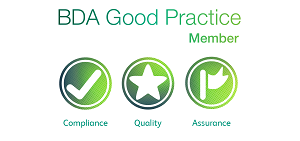NHS Treatment
We are dedicated to providing high-quality NHS orthodontic treatment to eligible children (under the age of 18). We pride ourselves on the quality of our NHS orthodontic treatment and aim to provide a service we would be happy for our own children to receive.
Treatment under the NHS is free of charge and includes one year’s retention after your brace has been removed. However if you need a replacement for a lost or broken removable appliance that can’t be repaired, there is a charge. The current NHS charge is £76.90 per appliance (2018). You have to pay this NHS charge even if you normally qualify for free or reduced cost NHS dental services, but you may be able to claim a refund. Click here to find out more.
Step 1 – The Initial Contact
Your Dentist will need to refer you for an orthodontic assessment, via the central referral management system. If you would like to be treated here at Overleigh, please let your dentist know.
Step 2 – Orthodontic Assessment
An NHS rating system known as the Index of Orthodontic Treatment Need (IOTN) is used to assess patients under the age of 18 for eligibility for NHS treatment.
The British Orthodontic Society’s website has more information about the IOTN. Click here to find out more about the IOTN.
Once we receive your referral you will be posted an appointment for assessment with either an orthodontist or an orthodontic therapist.
At this appointment you will be told you fall into one of the following categories:
- You meet the current NHS criteria for treatment – you will be placed on our waiting list
- You have more urgent orthodontic needs – you will be placed on our priority waiting list.
- You are not yet ready for treatment – you will be placed on our recall list and assessed again at a future date.
- You need oral hygiene assistance – you will be referred back to your dentist for treatment to be re-referred at a future date.
- Your orthodontic needs may be too severe for treatment at Overleigh – This will be discussed with you and if appropriate you may be referred on to a hospital for further discussion.
- You do not meet the criteria for treatment under the NHS – you will be referred back to your dentist and discharged from our waiting list. You will have the option of private treatment and details can be provided to you.
If your child does not qualify for NHS treatment, you can appeal via your referring dentist. Click here to find out more.
If you don’t qualify for NHS treatment, private treatment is available to you and with 0% finance available. It may be more affordable than you think. Click here to see our costs.
Step 3 – Treatment Planning
If you qualify for orthodontic treatment you will receive a New Patient appointment. The orthodontist will complete a full assessment that may involve clinical photographs, dental impressions and x-rays.
The information will be presented to you in your treatment plan. This will outline the type of treatments you will most benefit from and the estimated length of time treatment will take. Your orthodontist will be happy to help you with any queries or concerns you may have and you will be asked for your consent for treatment to start.
Step 4 – Ongoing treatment
Patients will need to be able to visit surgery every 6 to 8 weeks to ensure treatment progresses well.
Patients will also be expected to maintain a high level of oral hygiene throughout treatment. We have dental nurses who are trained in oral hygiene who can assist you; however your brace may be removed if your oral hygiene remains poor as there may be a risk of damage to your teeth and gums.
Most patients complete treatment without any problems; however a few patients experience a greater number of breakages. A lot of the problems can be prevented by not eating hard or very sticky food. A small number of patients may experience more breakages if they are biting on individual brackets. Sometimes this is unavoidable.
Step 5 – Retention
After your brace has been removed you will be asked to wear retainers. Retainers are designed to keep your teeth straight and it is important that you wear them as instructed. How frequently you will need to wear retainers depends on how your teeth originally looked. All patients are advised that you will need to wear your retainers long term to retain your teeth in their new position.
For more information please watch the British Orthodontic Society retention campaign video “Hold That Smile”



